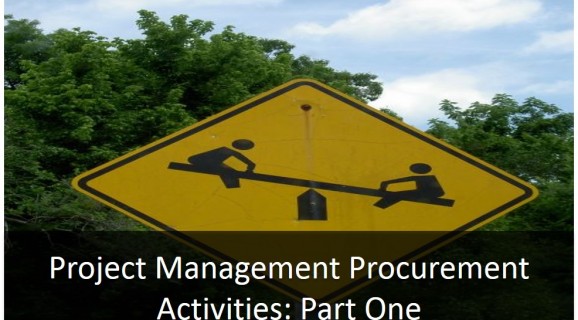
Procurement is the obtaining of gods and services by the project manager (or those delegated responsibility) that are used to meet the aims and objectives of the project. This includes the establishment, maintenance, and closing of relationships with companies and contractors that provide goods and services for the project.
Factors that affect procurement strategy and execution
There are a number of factors that affect procurement decisions:
- Cost
- Timing (schedule)
- Risk
- Quality
- Flexibility
The first two of these are the most dominant issues for the project manager to consider. The procurement process conducted constantly throughout the four project phases:
- Initiation
- Planning
- Execution
- Closure
Procurement in the initiation phase
During the initiation phase of a project, the project requirement will be analysed. This analysis could be conducted internally or by outside sources. The project will be tested for feasibility from a number of perspectives, including cost and timing. The project manager will need to consider projects risks, schedule, and scope.
The project manager will also identify the procurement approach. This may include a traditional approach where suppliers compete for business and the utilization of established relationships with suppliers to negotiate on price and schedule.
Procurement in the planning phase
With initial analysis complete and the approach to procurement identified, the project manager will be able to plan for management and maintenance of project procurement. Here it is possible to break down the procurement process into component parts:
Identify procurement risks
A number of risks are associated with procurement. These will include global risks, client and contractor risks, and project specific risks.
Authorisation for procurement
Authorisation for procurement responsibilities will need to given, therefore determining levels of responsibilities down the line.
Determine resource requirements
What resources are needed and when? Reference the project management plan and the work breakdown structure.
Prepare specifications
Having determined the resources needed, the specifications of resource (services, equipment, and goods) will need to be made. These specifications can then be used to identify potential suppliers that may be approached, before developing the procurement plan.
Identifying potential suppliers
Suppliers will need to be rated on the qualities that aid successful project delivery: speed and cost. However, quality must not be compromised and the project manager’s evaluation should include this aspect.
Solicit suppliers and negotiate contracts
Suppliers can be included at an early stage in order to gain expertise. This will add value to the existing project and upcoming projects.
A collaborative approach to procurement increases effectiveness in the planning, execution, and closing of the project. Use the experience of all stakeholders in order to increase the effectiveness of your procurement strategy and approach.
In our next article we’ll look at procurement during the execution and closing phases of project management.

